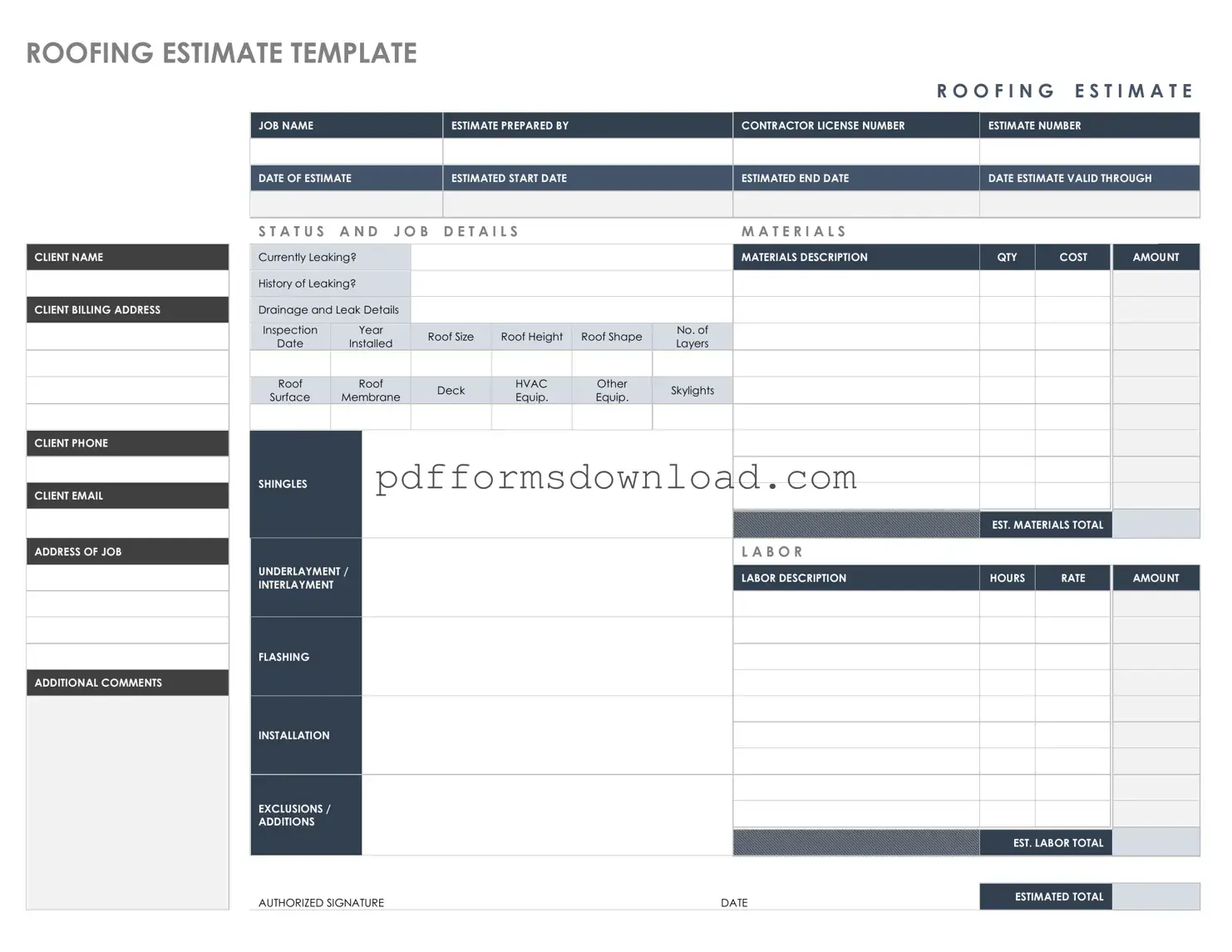What is a Roofing Estimate form?
A Roofing Estimate form is a document that helps homeowners and contractors outline the details of a roofing project. It typically includes information about the type of roofing materials needed, the size of the roof, and the estimated cost of labor and materials. This form serves as a starting point for discussions about the project and helps ensure that both parties are on the same page regarding expectations and costs.
Why do I need a Roofing Estimate?
A Roofing Estimate is essential for budgeting and planning your roofing project. It provides a clear understanding of the costs involved, allowing you to make informed decisions. Additionally, having a detailed estimate can help you compare quotes from different contractors, ensuring you get the best value for your investment.
How do I fill out the Roofing Estimate form?
Filling out the Roofing Estimate form involves providing specific information about your roofing needs. Start by entering your contact details, followed by the address of the property. Next, describe the current condition of your roof and any specific issues you want to address. Finally, include any preferences for materials or styles, and be sure to provide any relevant measurements.
What information do I need to provide?
You'll need to provide your name, contact information, and the address of the property where the roofing work will take place. It's also helpful to include details about the size of the roof, the type of roofing material you prefer, and any specific concerns or issues you have noticed, such as leaks or damage.
How long does it take to receive an estimate?
The time it takes to receive an estimate can vary depending on the contractor's workload and the complexity of your project. Generally, you can expect to receive an estimate within a few days to a week after submitting the Roofing Estimate form. If you need a quicker response, consider reaching out directly to the contractor to discuss your timeline.
Are estimates usually free?
Many contractors offer free estimates as a way to attract potential clients. However, some may charge a fee, especially if extensive inspections or detailed assessments are required. It's always a good idea to ask about any fees upfront when requesting an estimate.
What happens after I receive the estimate?
Once you receive the estimate, review it carefully to ensure all details are accurate. If you have any questions or need clarification, don’t hesitate to reach out to the contractor. After you’re satisfied with the estimate, you can discuss scheduling the work and any necessary contracts or agreements.
Can I negotiate the estimate?
Yes, negotiating the estimate is common. If you feel that the estimate is higher than your budget allows, communicate your concerns to the contractor. They may be able to adjust the estimate by suggesting alternative materials or modifying the scope of work. Open communication is key to finding a solution that works for both parties.
What if I have additional questions after submitting the form?
If you have additional questions after submitting the Roofing Estimate form, reach out to the contractor directly. Most contractors are happy to answer any queries you may have about the estimate, the roofing process, or the materials used. Clear communication can help ensure that your project runs smoothly.
Is there a deadline for accepting the estimate?
Estimates may have a validity period, often ranging from a few weeks to a couple of months. This timeframe allows contractors to account for fluctuations in material costs and availability. Be sure to ask about the expiration date of the estimate when you receive it, and make a decision before that date to avoid any potential price increases.
